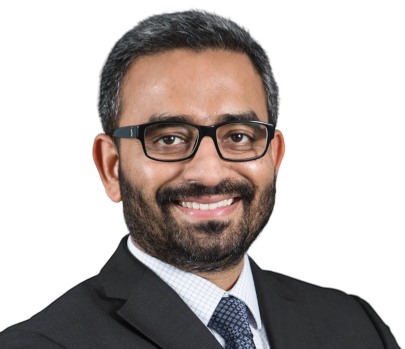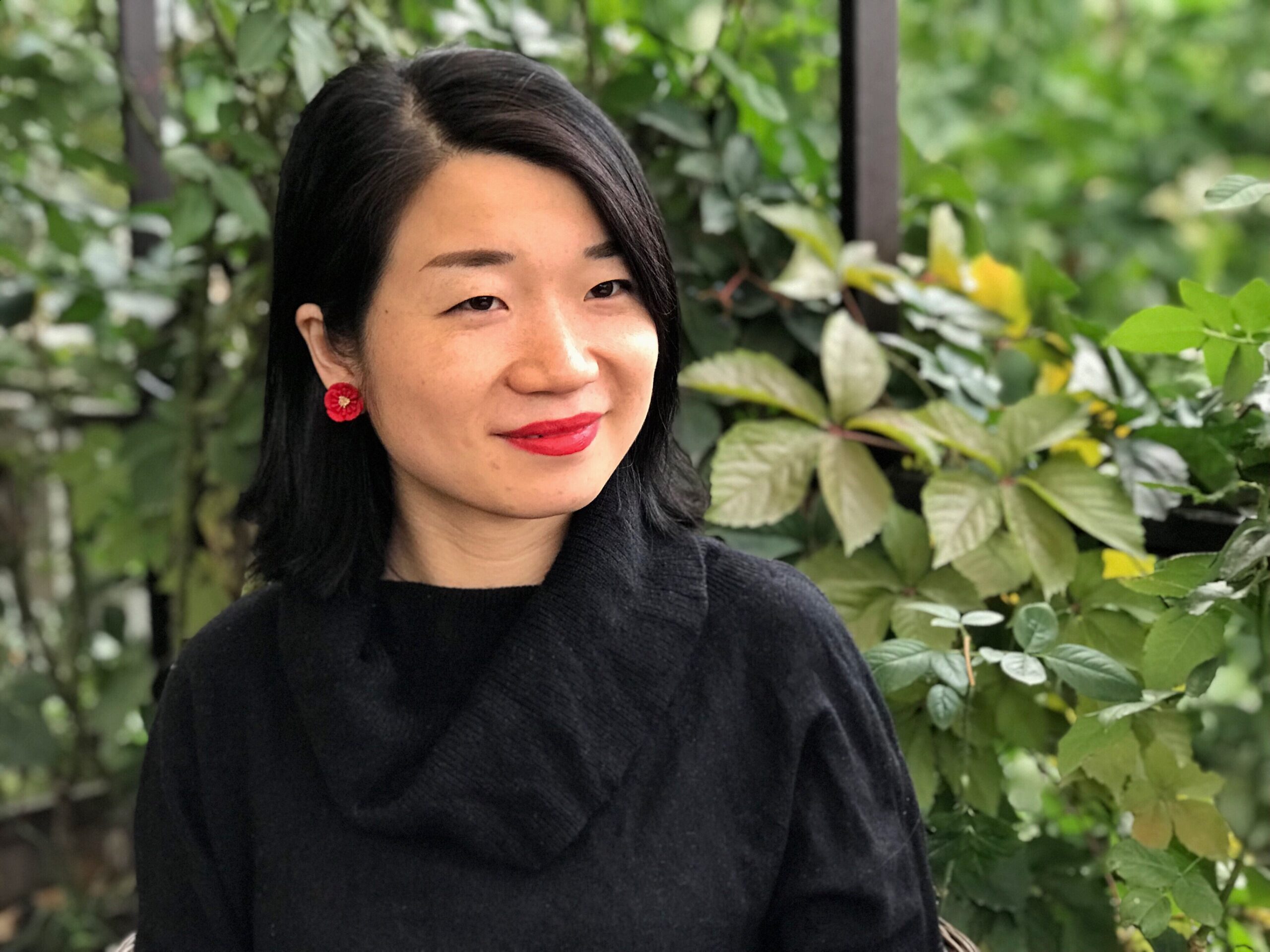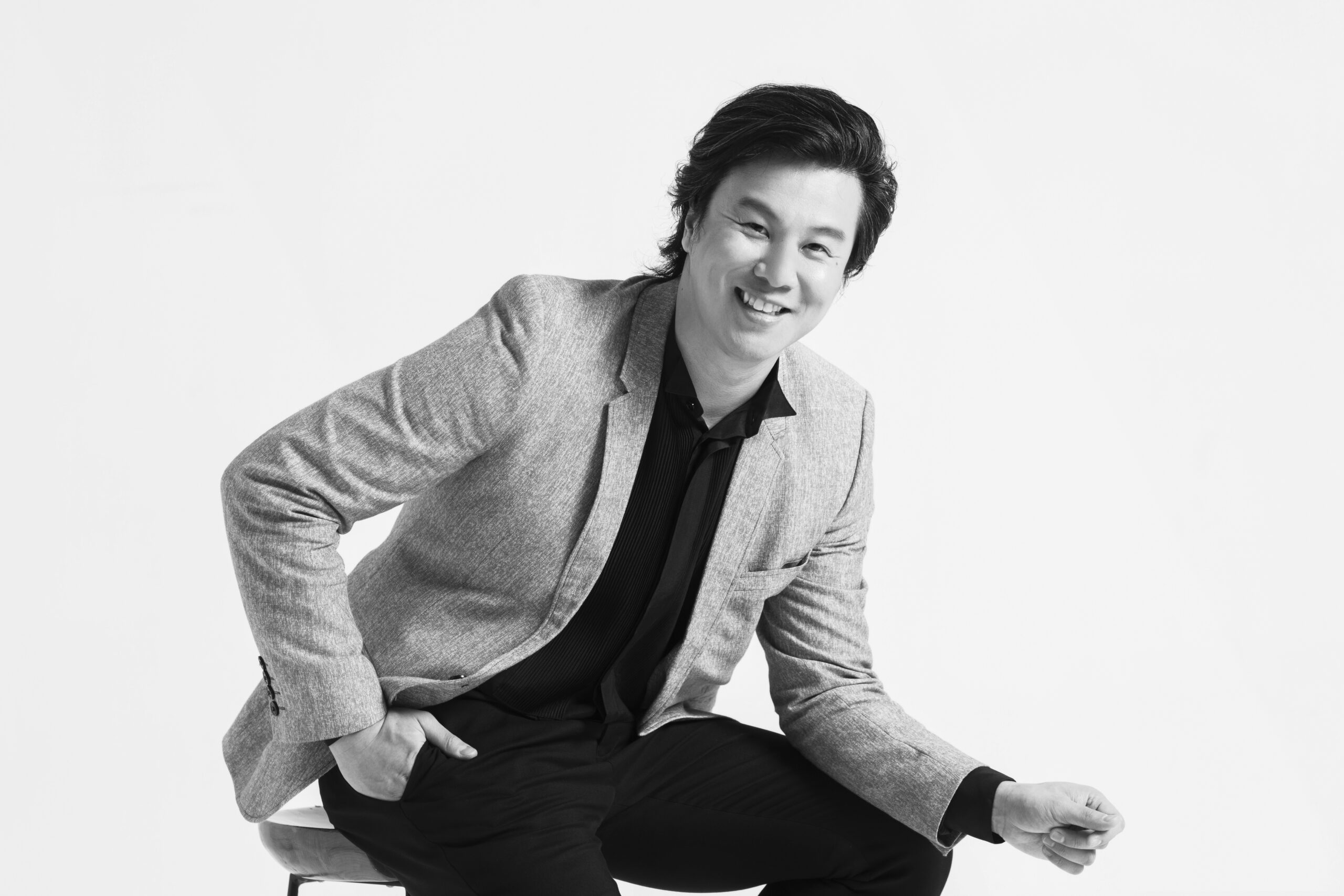Piyush Tewari
I am reforming India’s road laws to save millions of Indian lives.
Piyush Tewari is an Indian social entrepreneur, focusing on improving road safety, access to emergency medical care and urban governance across India. He is the Founder and CEO of SaveLIFE Foundation, and best known for his work to pass a Good Samaritan Law in India. Piyush was named Rolex Laureate in 2010, GQ India Man of the Year in 2015 and World Economic Forum’s Young Global Leader in 2019. He has been covered by the New York Times, TIME Magazine, and National Geographic among other media outlets. Piyush is currently based in New Delhi, India.
Sign up to our newsletter.
AP: Tell us about your family.
PT: My parents are both from Northern India from a state called Uttar Pradesh. My mom grew up in a very large family. Her dad passed away when she was very young, so she was brought up by uncles and aunts. My grandma used to work to raise the family. My grandfather was a parachute scientist. While growing up, my dad saw a lot of my grandfather air force’s work. My parents both ended up with degrees in Masters in Economics. After university, my dad joined the private sector while my mom was doing research work. Once they got married, my mom became a homemaker. And I came soon after. I have two siblings, a younger sister who is about two and a half years younger, and I have a younger brother who is about ten years younger.
AP: What were your family circumstances in India growing up?
PT: Until about the age of 12, things were great. My dad moved on from the private sector to set up his own business. I remember at the age of 12, his business crashed, and we pretty much lost everything. I still remember moving out of our three-bedroom apartment in Delhi to a place with only two rooms in a much lower economic suburb outside of the city. When it was raining, the ceiling would drip. Pretty much everything were sold, even the ordinary household items such as a dining table or a fridge. From there onwards, there were occasions where we didn’t have enough money for food.
It was a very, very tough environment. I saw my parents rebuilding their lives from scratch. Despite our circumstances, they never put us into cheaper or government schools since the education quality isn’t as good. I am grateful for that. They took loans, they sent us to good schools and ensured that our schooling would continue. We came together as a family during that period and built this resilience coming out of failure.
It was vital for me to do well in school to get us out of the family debt situation. I worked hard in school, and so did my siblings. I was in the top three of the class despite not having additional tutoring like the others due to family circumstances. I did everything on my own and some of the things that I studied back then, I still remember. My understanding of concepts is very strong, so that worked out well. I really enjoyed physics since I was good at it and I also enjoyed English quite a bit. I enjoyed writing and participating in debates and various competitions.
AP: What were your dreams as a child and what did you end up doing?
PT: I wanted to become a pilot growing up as I used to watch paratroopers coming down. The first ten years of my life, I spent on an Air Force Base outside Agra, it’s very close to the Taj Mahal. I wanted to fly. After high school, I applied for the National Defence Academy. I did the exam, I cleared the other tests, but I soon learned that I needed an eye-correction. You had to have 20-20 perfect vision to be able to fly in the Indian Air Force, and I didn’t have that so I didn’t make it. That was a rude awakening, though a minor correction that I never realized that I needed. At that point, I was lost. I didn’t know what to do, so I enrolled in computer science.
It was back in 1998 and computers were becoming a big thing. Since I didn’t have flying as an option anymore, I thought the next best thing would be to pursue computer engineering. It seemed to have good prospects, but pretty much in my second year of college, I realized that sitting and coding software was not for me, but I continued because I did reasonably well. I was a First Division holder, a ‘top six’ student in the class.
In India, you didn’t have the option of taking a gap year or just jumping out of streams and into other things. So I continued, and in retrospect, I’m glad that I did because it helped me with structuring my thinking. Engineering teaches us to break our problems into smaller solvable parts. That structure of breaking down problems, bucketing them, finding solutions to those smaller problems, and combining those solutions to create a larger solution is something that I even pursue today. Something I’ve done both with policies in India, as well as the on-ground work that we do on highways.
So I realized very quickly that I really didn’t like coding software. I wanted to be active, to go out and do things with people and to have a large impact. It was a significant risk. I had this massive pressure of getting a job really quickly so I can support my family, things were still not that great so it was very important for me to get a job. At that point, my mom gave me some advice, “Do something that you’re happy with because if you do something merely because of pressure, you’re not going to be good at it.”
“Engineering teaches us to break our problems into smaller solvable parts. That structure of breaking down problems, bucketing them, finding solutions to those smaller problems, and combining those solutions to create a larger solution is something that I even pursue today. Something I’ve done both with policies in India, as well as the on-ground work that we do on highways.”
AP: Tell us about the early days of your career.
PT: After deciding not to pursue a career in computer engineering, I took a huge risk of applying elsewhere for jobs, non-technical positions, any internships that I could get. Fortunately, the Prime Minister’s Office was looking for “a technology person”, somebody who had knowledge of computer science but wasn’t required to code. I was required to basically help with the project, which was to set up a website promoting India as a globally competitive investment destination. So I got involved in that project as an intern back in June 2003. In about a month, I’d already finished the project. I still had two months to go and didn’t have much to do, so I started reading. I found a copy of the economics of Africa, and I tried to study the economics of India. I had these questions, such as how GDP is calculated, and how agriculture, manufacturing and services work.
Later I was asked to work on a project that involves drafting a report on the industrial sectors of India. I ended up writing a 26-page report that I called India Scripting Future Histories. Somehow, it landed on the desk of the Prime Minister and he liked it so much that he ended up distributing it at the UN General Assembly in New York to all Heads of States. This was back in October 2003. I still remember the last day of my internship. My boss, who was the secretary for the Prime Minister, walked up to me and asked me if I wanted to continue working there full time. Even though the salary was nothing, I enjoyed writing that report so much that I decided to join them.
For the next four years, I did some amazing work on nation brand building and got to attend the World Economic Forum in Davos. Imagine a 22-year-old, trying to figure out how to navigate Davos and try to work with a team of Indian diplomats to position India as an investment destination. At the age of 26, I was handling a $4 million project single-handedly and briefing diplomats. I travelled to about 30 countries between 2003-2006, and it was the most incredible experience of my life. I grew as a person and as a professional. The work that I get to do was incredible. I was blessed to have gotten that opportunity.
When you work in government, especially at the Prime Minister’s Office, you really get to see your ideas being scaled very quickly and having an impact on millions of people. The Prime Minister who hired me was defeated in the 2004 election, fortunately, the new Indian Prime Minister decided to keep me in the new team. That was a real validation that they valued what I was bringing to the table and a significant endorsement for me.
During my stint in government, I visited a lot of private equity funds. Venture capitalists wanted to invest in India and one of the funds was chasing me to join them for a while. At first, I said no to them but later decided to accept their offer as I wanted a change from the government. I joined a US-based private equity fund that was investing in India. Initially, I joined as an engagement manager, but in about two years, I became the Managing Director of the company in India. I was leading 4-5 of our portfolio companies with about 250 employees and multi-million dollars in revenue. Essentially, I was helping to build those companies from the ground up. When I joined, they had a healthcare investment that was about 130 people. When I left, it was close to about 400. Today, that company is about 1000+ people. I got to play a role in working on nuts and bolts. That was my entrepreneurship education.
Again, I got lucky because my bosses trusted me. They gave me the authority to make decisions that were not as easy as I was one of the youngest employees in the organization. It was the first time I made money. Within two years, I was able to buy a house for my family, which they hadn’t had for 16 years as they were still living in rented accommodation. Things started looking up from there.
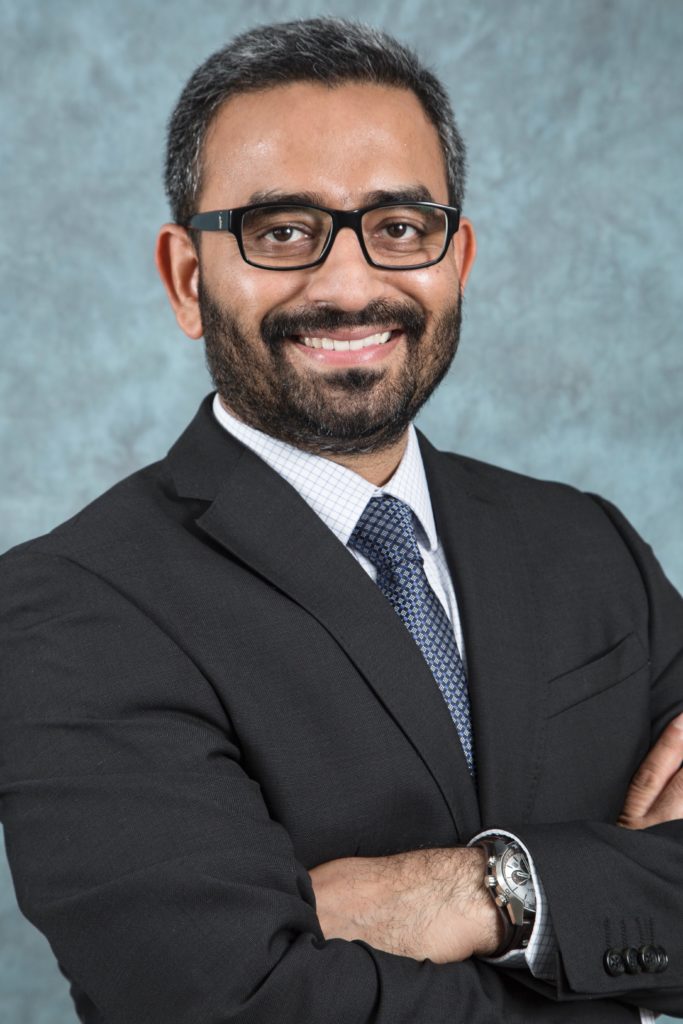
AP: We understand that a significant moment in your life is your cousin’s tragic death in a car accident, can you elaborate on that?
PT: On the 5th of April, 2007, I was heading back home from work, when I got a distressed call from my father. He said that my cousin Shivam has been in a very serious crash and we need to rush to wherever he was. In about 15 minutes after that, I received another call from him saying that Shivam has passed away. I still remember that moment very distinctly because I was on the road and had to park on the side to take that call. After hearing that, I could not drive. I could not move; my spine was frozen. More than anything, Shivam was someone whom we helped raised since his father had passed away in a road crash when he was six months old. It was devastating for us to see another family member to go through that. We felt directly responsible for him. I think that even today, 12 years down the line, I still struggle to explain that. It was a huge jolt.
For about ten months, I remained in shock, but that shock pushed me to study a lot more about the issue, trying to understand what was going on. I discovered that in India, 50% of injured persons died, despite having treatable injuries like my cousin’s case because of bystander inaction. Despite it being such a massive issue, no one was addressing it. It was almost considered to be a natural death. So after about ten months of researching, thinking and deliberation, I set up the SaveLife Foundation in February 2008.
The biggest challenge was that the problem of road fatalities was considered to be a non-issue. It was not regarded as serious enough even though there was data behind it. It was almost considered to be the byproduct of development. The kind of potential damage that comes with building new roads, buildings, having more vehicles, and so forth. On the contrary, this was anti-development. It was killing more poor people and the young, the most productive age group of our country, as well as causing billions of dollars in losses every year. It could not simply be stated as a cost of development. There was a process that we followed eventually to get those points across, but that was one big piece of a challenge to solve.
Because it was considered to be a non-issue, there were barely any resources allocated to the issue from philanthropy, government or the corporate sector. So from 2008-11, I financed the organization from my own salary to run the operations of SaveLife. We were training police to become medical first responders, and we were beginning to advocate for Good Samaritan Law for India. That’s one of the reasons I continued working full time in private equity because my income would be a large part of the organization’s funding.
AP: At what point did you realize that it’s time to commit to SaveLife Foundation full time?
PT: In 2011, I had to make a big choice because the private equity business was growing dramatically. I was extremely busy, and SaveLife also started to grow rapidly. The training that we were giving to the police was not just a classroom-based program, it was actually saving lives. In one instance, a person had been run over by a truck. By the time the police arrived, he was already choking on his own blood. The policemen used our training. They cleared the airways, managed to release the pressure, and gave him CPR. Before entering the trauma center, they were able to revive him. These stories were coming in, and the demand for what we were doing was growing. We were getting access to the high table and being called to meetings to ask for advice and also to ask us what we want.
I had to make a huge choice of which direction to go because I could not have given my time to both anymore. It was the toughest decision of my life due to my family background and the ability to bring my family out of that whole economic situation I described earlier. To say I’m not going to have a well-paying job anymore, I’m not getting paid for at least a year — it was tough. Again, my parents came through and said, “If that is what you want to do, you should do that. Don’t worry about us or anything else, and we’ll figure it out”. Family support gave me a lot of confidence. And that’s so important, especially for entrepreneurs and people who want to do big things. It’s so critical to have support from family and friends. We see a lot of people not trying things because they haven’t had that support.
So that gave me the ability to take that risk combined with the built-in resilience growing up as an adult son. Once you’ve seen what the bottom looks like, and you’ve gotten out of that, you’re not afraid of it anymore. If I fail and go back there again, I know exactly what to do to come back up. The resilience from that period combined with the family support was the driver for me to decide to quit my job. It was a big decision, but I’m so glad I did it. So I resigned and went full time into SaveLife Foundation.
That year, I was nominated for the Rolex Award for Enterprise, an initiative which was run by the Rolex Institute of Geneva. They give out these awards every two years to five people from around the world, and an Indian journalist nominated me for it. Somehow, I got shortlisted for the semi-finals and went to Singapore for a two-day interview and evaluation process. I still remember getting a call from Rolex in May or June of that year saying that I won the award. That was the first significant fund injection into SaveLife, as well as extensive validation. Thanks to that, we got coverage in the US, and Michael Bloomberg ended up discovering us during one of his transits, and we were flown over to present to Bloomberg Philanthropies. Starting 2012 till date, Bloomberg Philanthropies has been supporting us and the work that we do. I remember that 2012 was also the year that I was extremely frustrated with the government. People don’t help the injured not because of apathy but because of profound fear of getting involved in legal hassles and intimidation. Sometimes, for a bribe, police would threaten to implicate them if they have tried to rescue someone.
“People don’t help the injured not because of apathy but because of profound fear of getting involved in legal hassles and intimidation.”
AP: What were the pivotal and breakthrough moments for you and SaveLife?
PT: I was frustrated every time a government official or a minister would say to me, ‘Yes we know just what you’re saying is very important’ but they would not do anything about it. In July 2012, I sued the Government of India in the Supreme Court. The reason was that they were failing to preserve our right to life and were not creating an environment where preservation of life becomes paramount. When I took the Government to court, that became a very significant movement in the country. Because of that case, a lot of people who have suffered similar issues joined us. I still remember calling for a remembrance walk in central Delhi. When I was expecting 200-300 families to turn up, 3000 families turned up at literally no notice. It was such a huge validation again that the path that we were going on was for a lot of people.
Bringing people together for that mass push was eventually what started moving the process forward. The court case went on for about four years. Major media channels were covering us, the primetime show in India hosted by one of the top Bollywood actors called us on the show to speak about the issue. We had massive amounts of letters coming in. Former Prime Ministers wrote to us to show support. Over four years, we were able to build a key message that this was one of the most important criminal justice reforms in India, and if we were failing to improve road safety and save lives — no matter how much progress we’ve made, no matter how many emergency services we have, if people are afraid to play their part — all of these things will fail and the development plans will fail.
I still remember back in 2016, I was walking up the stairs of the Supreme Court, not expecting a decision because the case has been adjourned many times. The government lawyer wouldn’t turn up or some other political issue takes priority in the Supreme Court. I remember entering court 10 and standing in the corner and after about five minutes of the judges entering and sitting in their chairs, they leaned in to discuss something with each other. I suddenly realized that this might be the day. The two judges said they were going to pronounce judgment, in effect, saying that they were using special powers given to the Supreme Court in the Constitution of India. When there is an absence of government action or in the case of a national emergency, the Supreme Court is empowered to enact laws. They started reading out the judgment that it will be binding across the country and all courts of India, and will be punished if not followed. It took about 15 minutes for them to read out the entire judgment, basing it on facts and figures that have been submitted. Essentially, they instituted a Good Samaritan Law, which now encourages and insulates people from any kind of legal and procedural hazards due to rescuing an injured person. At the very least, call for help, if nothing else. That became a significant moment of success for us. From that success, we were also able to convince the Government of India to legislate it through Parliament and I’m happy to say that recently, the Indian Parliament has passed the Good Samaritan Bill.
The other thing we were able to do is to convince the Government to introduce a preventative law. The Good Samaritan law was a reactive measure, where a crash has already occurred, somebody got injured and you try and help them. We wanted crashes to stop occurring in the first place and we were able to convince the Government that they need a Road Safety Act as well. We drafted large parts of that, which was part of the legislation that was passed by the Indian Parliament. These events were big moments for us in terms of system change.
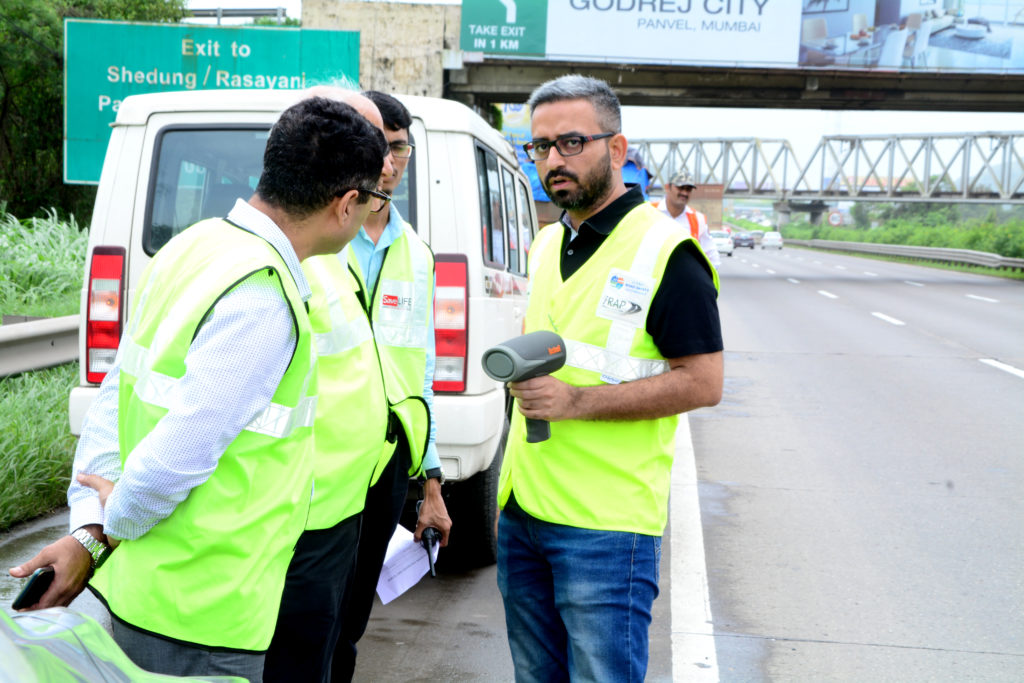
I’ve mentioned how it’s important to break down the problem into smaller parts and that is exactly what we did here. For us to say that we will address the entire gamut of road safety and solve the whole problem overnight was not something that we can figure out. It was this whole aspect of people not coming forward to even make that phone call — it became the first key problem that we went upon solving. We had to train the police to build credibility and to enable action on the ground. So all of those activities are part of the larger process to eventually create change that will affect 1.2 billion people. And that’s how we operate.
I also want to share about the business aspect, which is quite critical, something that now drives a lot of our strategy. Why should we just be the advocates and look at international practices? Why are we not building a proof-of-concept that can demonstrate that it is possible to make real progress by eliminating the risks on the most dangerous road section in the country? We took that challenge upon ourselves even though it seems fairly insurmountable, nobody has done it so far.
We took a stretch of road that was known to be one of the deadliest in the country with the objective to make it completely fatality-free. It took about a year for us to find a stretch of road to convince the government to let us carry out an intervention. We chose the Mumbai-Pune expressway and established a data-driven and evidence-based process to identify what the causal factors behind the crashes were. The first thing was to investigate those crashes, then identifying what those issues were and how to deal with it. Many families have been wiped out because of the high-speed commute and crash involved. That 94.5 km road had about 2000 engineering errors, which was monumental in many ways because it was considered to be one of India’s best belt expressways. We started a process to get the political will behind us to address the spots. In the last couple of years, we fixed over 1400 engineering errors, improved trauma care from 14 minute response time to 7 minutes, and improved enforcement by adding cameras, speed guns and other electronic measures. Engagement with road users increased. As a result, for the first time since it was opened in 1999, the Mumbai-Pune expressway’s road toll declined by 30%. We then picked an additional 130km stretch of roads, including the national highway in Delhi and started replicating our efforts there.
AP: What’s your measure of success?
PT: Our measure of success would be to not be needed five to seven years down the line. We’ve achieved a large part of that because of our approach. From a high-level perspective, we have created frameworks that didn’t exist, ownership that was missing. From a grassroots angle, we experimented and have a proof-of-concept to show that scientific investigations and interventions of crashes are possible and to fix engineering issues that seem insurmountable. It is possible to use technology for better enforcement too. Five to seven years down the line, we hope that there would be a significant drop in the road toll and India would have an authority like VicRoads in Australia or the NHTSA in the US, which takes ownership of road issues. There would be a Road Safety Act that’s comprehensive, inclusive and complete. It would address other factors that are not addressed earlier, such as the safety of children. Essentially, we would go out of business. That’s really what our hope is — for road and safety issues to be dealt with at an institutional level and it should not require someone to lose family members to prompt change. That’s really something we’re hoping to achieve in the next five to seven years.
“In July 2012, I sued the Government of India in the Supreme Court. The reason was that they were failing to preserve our right to life and were not creating an environment where preservation of life becomes paramount. When I took the Government to court, that became a very significant movement in the country.”
AP: How do you motivate yourself and keep going during times of hardship?
PT: First, I have a great support network, people who were there for me especially when I received death threats from the construction mafia, given the corruption in the road transport and construction space. We had very large powerful lobbies that were working against us because their interests were getting affected. I still remember the first call I received, threatening to run me over with a truck. I moved out of my house immediately because my biggest concern was my family. Two things have really worked out. The moment the senior police officers found out about it, within days, they dealt with it. That was something that didn’t happen often in India. It was fairly special but things moved fairly quickly, I was immediately insulated from the kinds of threats I was getting.
The second is about the moments with people. Policy is a space that doesn’t give instant gratification. In terms of child hunger, if I was to describe what we do — it’s the difference between feeding a child in front of your eyes and getting some gratification versus eradicating child hunger. The latter would come a lot later but eventually solves the problem. We didn’t have anything beyond our training program that would give instant gratification, so there have been times that I felt low about things. I remember my professor from Harvard said that every time you doubt what you’re doing or you’re feeling low, or you are questioning yourself, just go and talk to the victims. They will tell you why you do what you do. That has become an integral part of my schedule on a monthly basis. I spend as much time with victims families as possible. I personally respond even though we have a Crash Investigation Unit that travels across the country to investigate horrific mass casualty incidents. I would meet with the victims to understand what they were going through. And every time I do that, it just tells me again and again, why it’s so important and so urgent, to keep doing what I’m doing and to continue that process.
AP: Can you elaborate on how you use technology at SaveLife to improve road safety in India?
PT: The first and foremost piece is the data and the evidence collection process. That’s the first interface with technology that we have where we use various kinds of devices, including IoT devices to capture data from the crash as well as from hospitals. That’s the first process where we have a deep interaction with technology. What we’re doing now is to build our own tech in that space since we understand very well how to carry a crash investigation in an environment like India now.
The second piece is when the data comes in. How do you analyze that and how do you go about dealing with them? So in the last two years, we have collected 8 million data points from different crash scenes and different incidents that have occurred on the Mumbai-Pune expressway and the newer roads that we are now dealing with. The next big challenge is how to use tech to deal with those data sets.
The third is the intervention phase after we have analyzed the data and have a better understanding of different solutions. We deploy a lot of cameras and a lot of devices, including having our own vehicle on the expressway to support the enforcement and implementation work. The data from our vehicle goes to a satellite, which sends out a feed to Delhi. We have electronic enforcement to automatic number plate recognition (ANPR) cameras that are happening on the expressway.
Finally, the evaluation phase. For monitoring purposes, we are now seeking permission to use drones connected to the satellite feeds to be able to monitor the expressway better. It would be the first highway in South Asia which will use drones for enforcement and monitoring purposes.
“For monitoring purposes, we are now seeking permission to use drones connected to the satellite feeds to be able to monitor the expressway better. It would be the first highway in South Asia which will use drones for enforcement and monitoring purposes.”
AP: Who has a profound impact on your life that you value?
PT: The entire initiative started because of my family so for me, they always come first. Seeing my family survive through that entire struggle during my childhood and coming together to deal with it — that instils certain values in me, so the priorities that I have are very clear. I spend as much time with my parents and siblings as possible and I take out time for friends.
AP: What’s your favourite book?
PT: The books that have really helped me are the ones that helped me think through some of the challenges I’m facing with the organization culture. There’s a book called The Culture Code by Daniel Coyle, which I highly recommend to anybody who is leading a team and wants to set a culture. Another I would strongly recommend is a book called Streetfight by Janette Sadik-Khan, who was the former transport commissioner of New York City. There are parts of it which are fairly technical and pertain to my field, but there are parts of it, which talk about the insurmountable challenges of the bureaucracy and how do you push through a mass level change to save lives. There was a more recent book I read that I could quite relate to given my youth and my early life, it’s called Born A Crime by Trevor Noah. It’s a hilariously written book but so serious in many ways. He’s talking about what it was like growing up in poverty, facing challenges, and coming out of those challenges in a way that I can relate to.
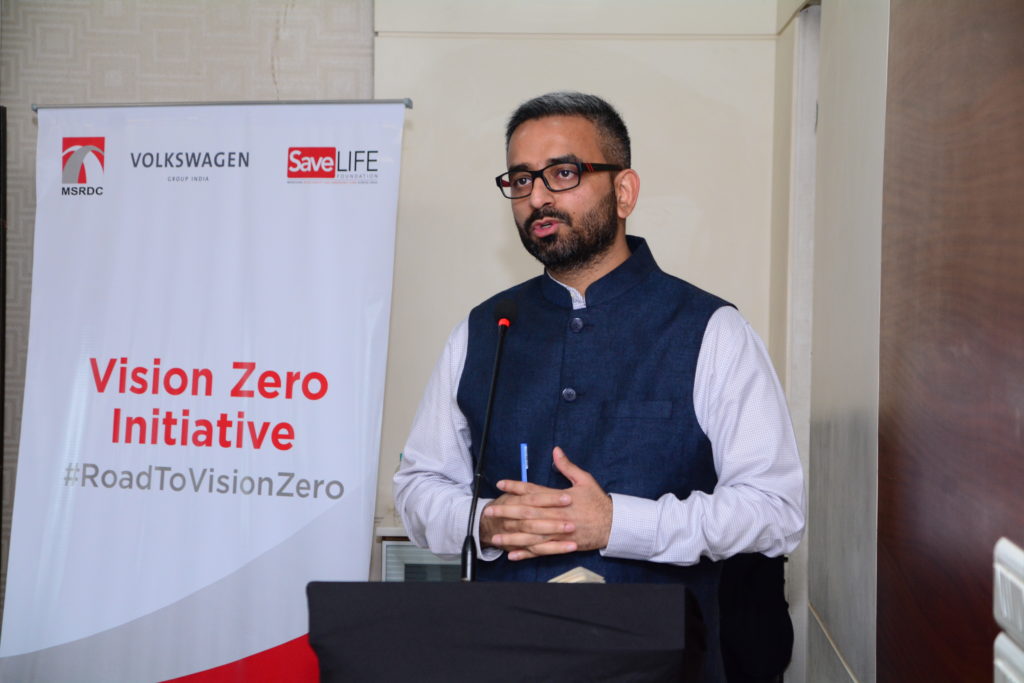
AP: What’s your plan for the future and what important global issues do you care about other than road safety?
PT: I haven’t delved extremely deep into that. But at this point in time, options are open. I might run for office, I might set up another enterprise. One of the issues that I’m extremely passionate about is water and how water is running out in developing countries. I think it’s going to become the next reason for discord and apartheid. I became a Young Global Leader this year, and one of the things that I’m initiating is action around conserving water and land. Even if I do run for office someday, my goal would be to ensure that we can do something to save the planet from what seems to be fairly imminent destruction.
I do feel that policy and advocacy activities are going to be an integral part of whatever I do going forward, though you can’t do policy or advocacy in a social enterprise. The non-profits or think tanks are able to do that process, maybe a hybrid institution can too. If I do plan to set up another organization, I’ll probably use the platform of SaveLife itself, which already has some credibility and brand recognition to expand to other issues.
AP: What advice can you give to other young Asian Pioneers wanting to have a systematic impact?
PT: I think the first and foremost challenge is the problem statement. One of my biggest learning has been to not let the problem statement being institutional-driven. My one piece of advice that I give to younger folks that are on the boards of organizations is to see where you can get evidence to support. When my cousin died, it could have easily been assumed that ‘All drivers are horrible, and that’s the core of the problem.’ I think using data and evidence to go deeper into that and ask, ‘Why is it that people drive like this in India?’ We get reasons such as the licensing processes and structured training are not available in India. It’s considered to be an area where employment can be provided so access to solve that is given very easily. Therefore, make it politically important by getting evidence to support your position.
The second piece of advice is to see if you can break down what you’re doing in three clear phases. There’s the R&D phase, which is where you’re testing, trying, failing. There’s the replication phase, which is where you are replicating your success again, trying and failing and learning from it and trying again. And then scaling because that’s where the big change happens. Think about these three phases earlier on to articulate a plan for success going forward. It’s what I’ve learned from Kevin Starr of the Mulago Foundation.
AP: Thank you so much for your time Piyush, you’re an inspiring pioneer in so many ways!


